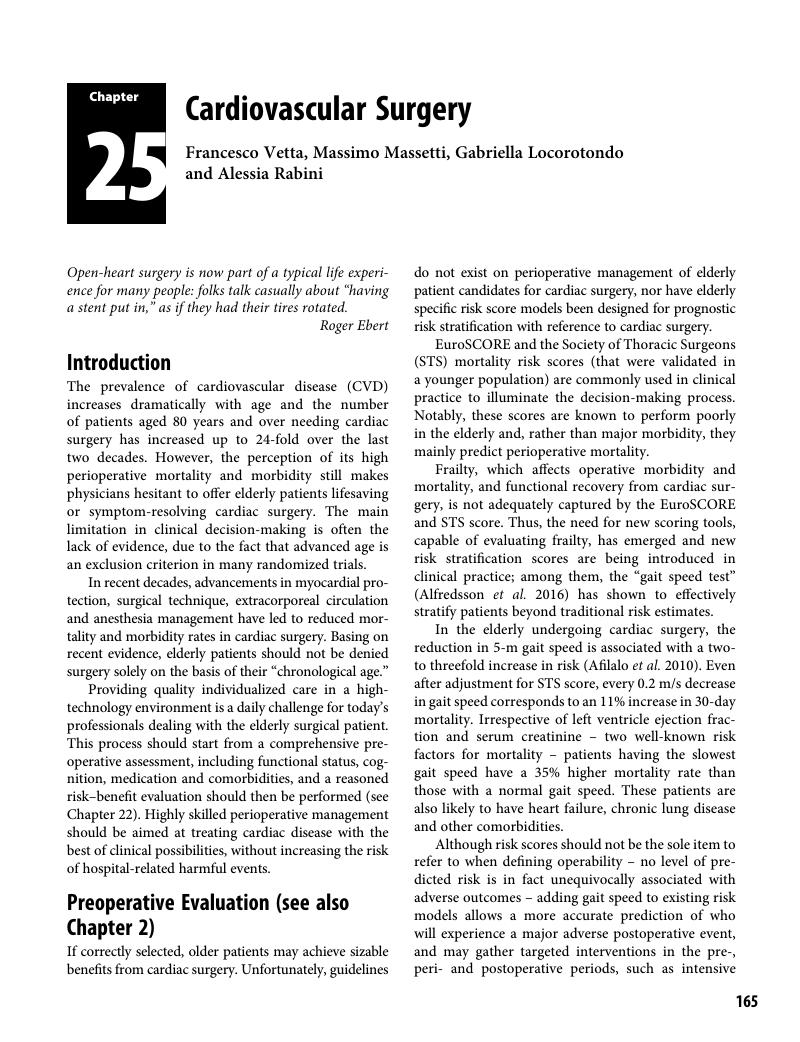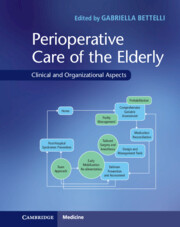Book contents
- Perioperative Care of the Elderly
- Perioperative Care of the Elderly
- Copyright page
- Contents
- Contributors
- Forewords
- Preface
- Introduction: Population Aging, Healthcare Systems and Surgery
- Section 1 Preoperative Evaluation
- Section 2 Preparation for Surgery
- Section 3 Intraoperative Management
- Chapter 17 Entering the Operating Theater: A Challenging Experience
- Chapter 18 Safety in the Operating Room: Special Needs of Geriatric Patients
- Chapter 19 The Geriatric Patient and Anesthesia
- Chapter 20 Regional Anesthesia Techniques
- Chapter 21 Fluids and Electrolytes Management
- Chapter 22 Surgery in the Elderly: General Considerations
- Chapter 23 Cancer Surgery and the Elderly
- Chapter 24 Orthopedic Surgery
- Chapter 25 Cardiovascular Surgery
- Chapter 26 Thoracic Surgery
- Chapter 27 Abdominal Surgery
- Chapter 28 Day Surgery and Office-based Procedures
- Chapter 29 Cataract Surgery
- Section 4 Postoperative Management
- Section 5 Key Issues for Optimal Organization
- Index
- References
Chapter 25 - Cardiovascular Surgery
from Section 3 - Intraoperative Management
Published online by Cambridge University Press: 16 November 2017
- Perioperative Care of the Elderly
- Perioperative Care of the Elderly
- Copyright page
- Contents
- Contributors
- Forewords
- Preface
- Introduction: Population Aging, Healthcare Systems and Surgery
- Section 1 Preoperative Evaluation
- Section 2 Preparation for Surgery
- Section 3 Intraoperative Management
- Chapter 17 Entering the Operating Theater: A Challenging Experience
- Chapter 18 Safety in the Operating Room: Special Needs of Geriatric Patients
- Chapter 19 The Geriatric Patient and Anesthesia
- Chapter 20 Regional Anesthesia Techniques
- Chapter 21 Fluids and Electrolytes Management
- Chapter 22 Surgery in the Elderly: General Considerations
- Chapter 23 Cancer Surgery and the Elderly
- Chapter 24 Orthopedic Surgery
- Chapter 25 Cardiovascular Surgery
- Chapter 26 Thoracic Surgery
- Chapter 27 Abdominal Surgery
- Chapter 28 Day Surgery and Office-based Procedures
- Chapter 29 Cataract Surgery
- Section 4 Postoperative Management
- Section 5 Key Issues for Optimal Organization
- Index
- References
Summary

- Type
- Chapter
- Information
- Perioperative Care of the ElderlyClinical and Organizational Aspects, pp. 165 - 170Publisher: Cambridge University PressPrint publication year: 2017

